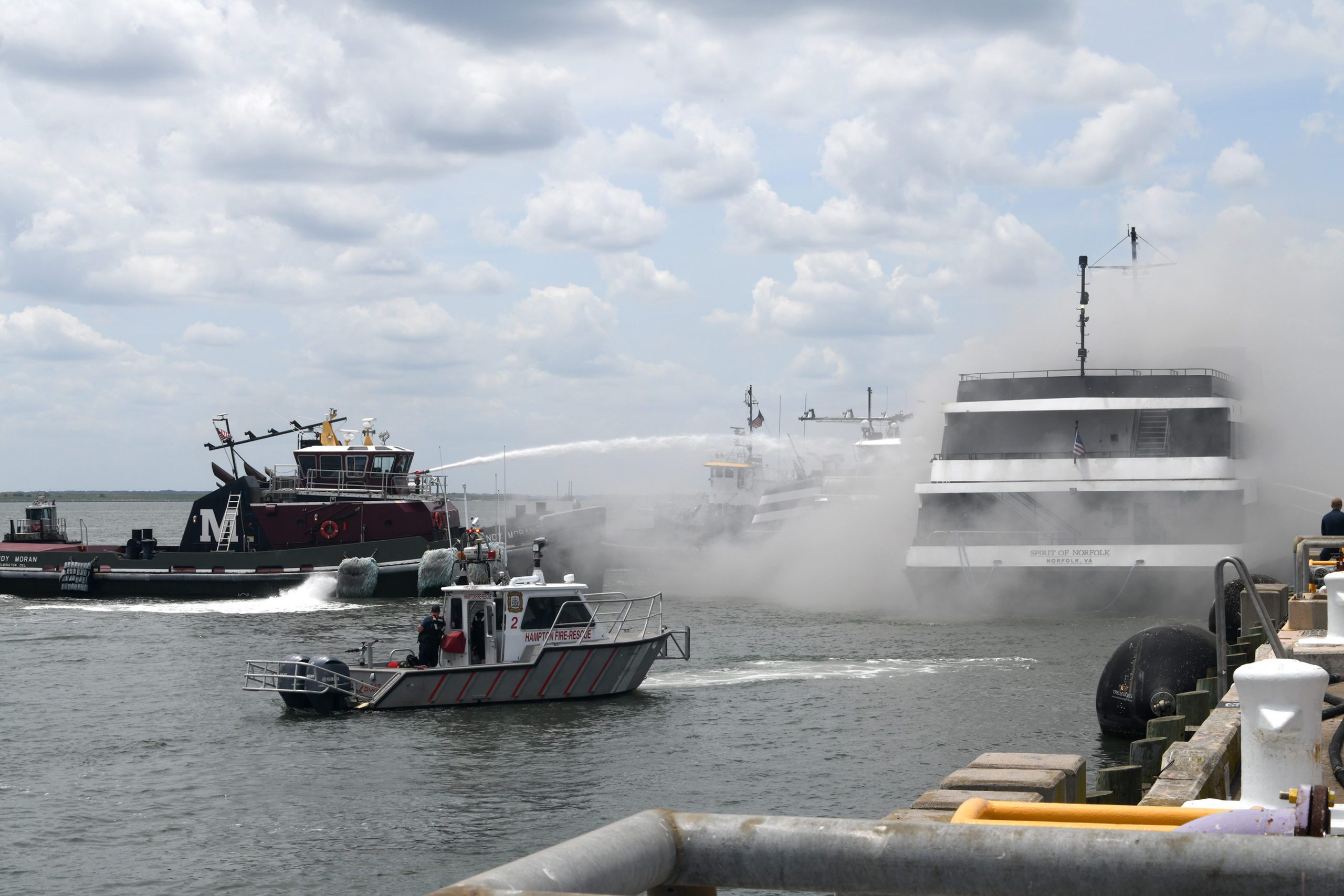The National Transportation Safety Board (NTSB) has issued recommendations for the installation of engine-room fire detection and fixed fire extinguishing systems on small passenger vessels that were previously exempted from U.S. Coast Guard regulations. This comes after an investigation into an engine room fire aboard the Spirit of Norfolk, which occurred during a sightseeing cruise near Naval Station Norfolk, Virginia, on June 7, 2022.
During the incident, the fire overwhelmed the crew, resulting in the evacuation of all 108 passengers and crew members to other vessels. It took firefighters four days to extinguish the blaze, and the vessel was declared a total loss with an estimated value of $5 million. Fortunately, no injuries were reported.
The NTSB first raised concerns about the increased risk of engine room fires on small passenger vessels over 20 years ago. In 2007, they first recommended the requirement of fire detection and fixed fire suppression systems on all small passenger vessels carrying more than 49 people. However, current regulations exempt small passenger vessels regulated under Subchapter K, which were operating before March 10, 1996, from certain construction and installation requirements, including engine-room fire detection and fixed fire extinguishing systems. Subchapter K vessels are certified to carry more than 150 passengers or have overnight accommodations for more than 49 passengers.
NTSB Chair Jennifer Homendy says it’s time for the Coast Guard to remove the exemption from the Subchapter K regulations.
“More than 100 of these exempted small passenger vessels are currently operating without fire detection or firefighting systems in their engine rooms while carrying hundreds of passengers—a completely unnecessary risk to passengers and crew. Vessels carrying a large number of people, no matter when they began operations, should be required to have fire detection and prevention systems so crews can take immediate action to protect and save lives,” says Homendy.
The investigation into the Spirit of Norfolk fire determined that it was likely caused by the ignition of combustible materials stored near the exhaust pipe of the operating port generator. As the vessel was in service before 1996, it was not required to have engine-room fire detection and fixed fire extinguishing systems. The absence of these systems allowed the fire to grow unnoticed and hindered crew firefighting efforts, the NTSB said.
The NTSB investigation also revealed ineffective communications between the unified command, responsible for coordinating firefighting and response operations, and the firefighting teams. This contributed to the severity of the fire on the Spirit of Norfolk. The original plan to fight the fire was to use foam through the emergency hatch on the main deck, but the hatch could not be located by the firefighting teams. The lack of communication between the teams and the unified command, as well as the failure to monitor the search for the hatch, led the fire attack team to open the engine room door, inadvertently causing the fire to spread.
In response to the incident, City Cruises, the operator of the Spirit of Norfolk and other sightseeing vessels, has committed to a multi-year project to retrofit their vessels with fixed fire extinguishing and fire detection systems.
NTSB Report: Engine Room Fire Aboard Passenger Vessel Spirit of Norfolk

 Join The Club
Join The Club











